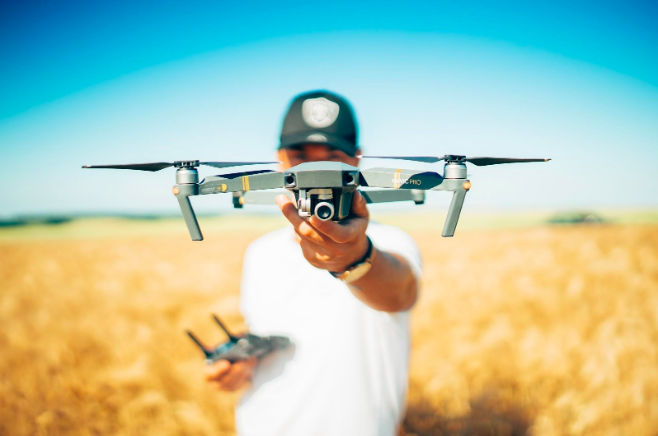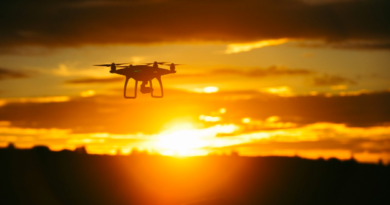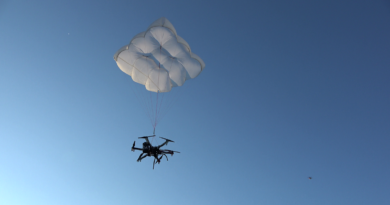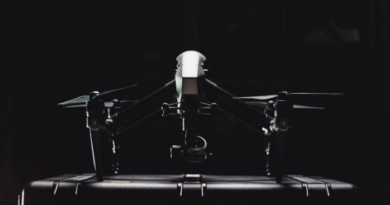5 Trends Impacting the Commercial Drone Industry
![]()
Drones don’t just belong to children and hobbyists anymore. These little flying robots have started making an appearance in nearly every industry, sending the commercial drone industry into an upward spiral. With all these new applications emerging, what trends are currently impacting the commercial drone industry, and what can drone makers expect to see in the future?
1. New Drone-Related Legislation
Not every trend facing the commercial drone industry is a positive one. In Detroit, the Uniform Law Commission — a collection of commissioners who have probably never flown a drone in their lives — is drafting the Tort Law Relating to Drones Act. This act gives property owners the ability to implement aerial no-fly zones, essentially letting property owners become air traffic controllers.
The ULC believes they’re protecting homeowner privacy, but all they’re going to manage to do is hobble the commercial drone industry, stifling innovation and making it impossible for commercial owners to use this new technology to their benefit.
2. More FAA-Certified Pilots
While we don’t have updated numbers for 2019 yet, as of 2018, there were more than 122,000 registered commercial drone pilots in the United States. An FAA regulation went into effect on Dec. 21, 2015, requiring both personal and commercial drone pilots to register any drones that weighed more than 0.55 pounds and less than 55 pounds.
As commercial use of drones continues to grow, there will be more FAA-certified pilots looking to employ their skills in different industries. It could even become a valuable ability, with companies paying their employees to become FAA-certified. There will likely be more people listing this skill on their resume in the coming years.
3. More Commercial Use
Commercial drone use is growing exponentially. In 2019, the FAA projects there will be more than 2.4 million drones in the United States. Studies have shown drones increase construction site safety by 55%. Drones have saved more than 100 lives in the past year. In the next five years, they have the potential to save thousands more. On the job site, drones can do everything from survey property to inspections and even delivering materials.
As drones become autonomous, they will also improve lean manufacturing protocols by increasing efficiency and reducing waste. In light assembly, drones have improved on-time delivery from 60% to more than 90%. In wood manufacturing, drone-assisted lean manufacturing can reduce work costs by $750,000 and increase productivity by 23%.
As drones become more versatile, their potential applications expand exponentially. This trend will continue to impact the commercial drone use industry in 2019 and beyond.
4. New Possible FAA Regulation
2019 may be the year the FAA finally implements their remote-tracking legislation, requiring both commercial and personal drones to be identifiable remotely. This law will give the FAA and law enforcement the tools they need to track both the drones and their pilots during flight.
The FAA promised their new regulations would be in place by July 21, 2019, but announced recently that they will postpone the proposal until Sept. 20 at the earliest. Once the proposal is complete, it will likely take two more years to finalize and implement.
5. More Drone Automation
Right now, most drone pilots operate their craft manually, but that might not be the case for much longer. Autonomous drones, like self-driving cars, are the wave of the future, but the technology isn’t quite ready yet. Once it’s ready, drones may be able to deliver packages and medical supplies, complete tasks and inspect job sites without the need for human pilots. These drones will still need human operators to analyze the data they collect, but if they can complete their tasks autonomously, it could reduce the industry’s need for skilled pilots.
The Future of Commercial Drones
The commercial drone industry will continue to grow in 2019 and likely through the next five years as different industries discover new applications for these devices. Today, they appear in agriculture, construction and rescue work. In the next half-decade, they could find a place in nearly every sector on the planet. New FAA regulations and local legislation may make it more difficult to use drones in both commercial and personal applications, but as a whole, the sector will continue to expand.
- 5 Trends Impacting the Commercial Drone Industry – July 27, 2019
- Do Drones Have a Place in Manufacturing? – April 26, 2019
- Here’s How You Can Implement Drones Into Commercial Operations – January 26, 2019
- Here’s How Drones Reduce Costs in the Energy Sector – September 18, 2018
- Geoscience Research Improved by Drones – July 8, 2018



